'Jesus tomb' statistics don't add up, biblical scholars say
By Michael Foust
Baptist Press
http://www.bpnews.net/bpnews.asp?ID=25149
NASHVILLE, Tenn. (BP)--An often-quoted statistic behind the so-called “Jesus tomb” is inflated and based on false assumptions, leading biblical scholars say. “The Lost Tomb of Jesus” documentary aired on the Discovery Channel March 4, claiming a tomb in Jerusalem once housed the bones of Jesus and his family and that the odds of it not being Christ's tomb are only 1 in 600. That statistic has formed the core of the argument for the program's backers, who say the likelihood of finding another tomb with ossuaries containing the inscriptions “Jesus son of Joseph,” “Mary,” “Mariamene e Mara” and “Jose” is slim. The documentary said “Mary” was Jesus' mother, “Mariamene” his wife Mary Magdalene, and Jose his brother. Two other ossuaries found in the tomb -- those of a Matthew and a “Judah son of Jesus” -- also were members of Jesus' family, with Matthew being of an unknown relation and Judah being the son of Christ and Mary Magdalene, the documentary claimed. (The statistic, though, did not include Matthew or Judah in the formula.)The overwhelming majority of archaeologists and scholars have refuted the claims, and the statistician behind the numbers -- Andrey Feuerverger of the University of Toronto -- posted a statement on the school's website saying his statistic “depend[s] heavily on the assumptions that go into it.” Among those assumptions, Feuerverger said, are that “Jose” is the brother of Christ referenced in Mark 6:3 and is not the “Joseph” referenced on the Jesus ossuary. (Jose is a nickname for Joseph.) But most significantly, Feuerverger said, the statistic assume that “Mariamene” is Mary Magdalene, even though she is not given such a name in the New Testament, and even though the New Testament says nothing about Christ being married and implies strongly He wasn't. Putting Mariamene in the formula “drives the outcome of the computations substantially,” Feuerverger said. “It is not in the purview of statistics to conclude whether or not this tombsite is that of the New Testament family,” said Feuerverger, who stands by his formula and says it will be published for peers to review. “Any such conclusion much more rightfully belongs to the purview of biblical historical scholars who are in a much better position to assess the assumptions entering into the computations.”In fact, one religious scholar, Louisiana College's Charles Quarles, put together his own statistics -- excluding Mariamene since he believes the evidence is overwhelmingly against her being Mary Magdalene -- and came up with something very different from Feuerverger. Quarles says between 56 and 105 males in Jerusalem during Jesus' time would have had a father named Joseph and close relatives named Mary and Jose. Thus, according to Quarles, it is very unlikely the tomb belongs to Christ -- even if one discounts the bodily resurrection.Both sides of the debate acknowledge the names on the ossuaries were common for the time. Roughly one-fourth to one-fifth of all women were named “Mary.” “Joseph” was the second most common male name, “Jesus” the sixth. Feuerverger's formula included a 1 in 4 chance that a woman at the time would be named Mary, and a 1 in 20 chance that a man would be named Jose. He put the odds at a Jesus being the son of a Joseph at 1 in 190, and the odds of a “Mariamene e Mara” being found at 1 in 160. Putting all the numbers together in a formula, Feuerverger came up with the 1 in 600 stat. (Such odds about first-century names are based on a database of approximately 3,000 known people at the time.) The name “Jesus son of Joseph” on an ossuary is rare, but not a first; at least one other one has been found elsewhere. But it is the odds Feuerverger placed on the Mariamene ossuary that have many scholars scratching their heads.The documentary interpreted the “Mariamene e Mara” ossuary, which is in Greek, as reading, “Mary, known as Master.” That specific translation changed the odds from a relatively unimpressive number to the aforementioned long odds of 1 in 160, since those associated with the documentary said it was a rare find. But Richard Bauckham, professor of New Testament at the University of St. Andrews in Scotland, disagrees with the translation. “'Mara' in this context does not mean Master,” Bauckham wrote in a statement posted on several scholarly weblogs. “It is an abbreviated form of Martha. Probably the ossuary contained two women called Mary and Martha (Mariamne and Mara).”Craig Blomberg, professor of New Testament at Denver Seminary, also disagrees with the documentary's translation and believes the inscription likely is one person named “Mary Martha.” Either Bauckham's or Blomberg's interpretation would change the statistical formula dramatically and lower the odds, since Martha was the fourth most popular female name at the time, and Mara the eighth. Dozens of such common names on ossuaries have been found.The documentary tied the “Mariamene” with Mary Magdalene by using a non-biblical document, the Acts of Philip, which was written several hundred years after Christ and which references a “Mariamene.” But Quarles says the document never identifies Mariamene as Mary Magdalene but simply calls her the sister of Philip. More importantly, Quarles said, the New Testament never calls Mary Magdalene “Mariamene.”Scholars say there are other problems with the documentary's claim that would have impacted the statistical formula: -- Jose's ossuary does not list him as a son of Joseph, while the Jesus ossuary does. The documentary claimed Jose and Jesus were brothers and sons of Joseph. If Jose is taken out of the formula, it would lower Feuerverger's odds. “[T]he lack of the 'son of Joseph' description significantly decreases the probability that Yeshua and Jose were siblings,” Quarles wrote in an analysis.Additionally, the other brothers and sisters of Jesus listed in Mark 6:3 are missing from the tomb. That verse lists four brothers -- James, Joses, Judas (not the traitor) and Simon -- as well as an untold number of unnamed sisters. -- Jose (short for Joseph) may have been the father of the Jesus in the tomb, Quarles said, and not the brother. If true, then Jose was listed twice in the formula, incorrectly raising the odds.-- Judah and Matthew are not listed as Jesus' family members in the New Testament. Some scholars say that fact alone should invalidate the documentary's claim, much less the statistical formula. There is no historical evidence for Christ having a son.-- Jesus was not known as the son of Joseph by his family or disciples. Writing on his blog, Ben Witherington III, professor of New Testament at Asbury Theological Seminary in Wilmore, Ky., quotes Luke 3:21, which says Jesus was only the “supposed” son of Joseph.“Supposed by whom? Clearly not by Luke or the family whom Luke has just shown knew about the virginal conception of Jesus,” Witherington wrote. “Even the cousins knew about this miracle when Mary told Elizabeth. There can be no good reason Luke would put it this way if he knew the earliest followers of Jesus or members of his family had thought that Jesus was son of Joseph.”-- The Jesus ossuary does not say Jesus but possibly “Hanun,” according to Stephen Pfann, a biblical scholar at the University of the Holy Land as quoted in the Associated Press. That, obviously, would end the debate for good.Christians, Quarles said, should not discount the claims of the documentary but instead should “appeal to the compelling eyewitness accounts of the resurrection” in the New Testament -- which he notes are the oldest and most reliable accounts -- and then “carefully scrutinize the exaggerated, illogical, and poorly substantiated claims” of the documentary and its accompanying book, “The Jesus Family Tomb.”“The sensational claims of The Jesus Family Tomb will be major news for some time and this book and film, like the Da Vinci Code, will provide informed believers with an excellent opportunity to present the compelling evidence for Jesus’ bodily resurrection, an essential element of our Christian faith (Romans 10:9),” Quarles wrote. “But let’s 'make no bones about it,' the bones in the Talpiot tomb were not the bones of Jesus of Nazareth.”--30--Quarles complete paper is available online at:http://www.lacollege.edu/ifl/jesus_tomb.pdf

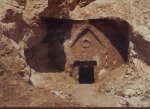
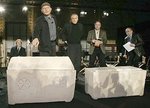






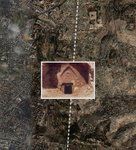


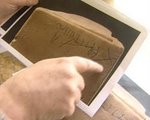






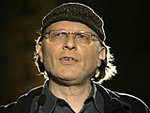

















No comments:
Post a Comment